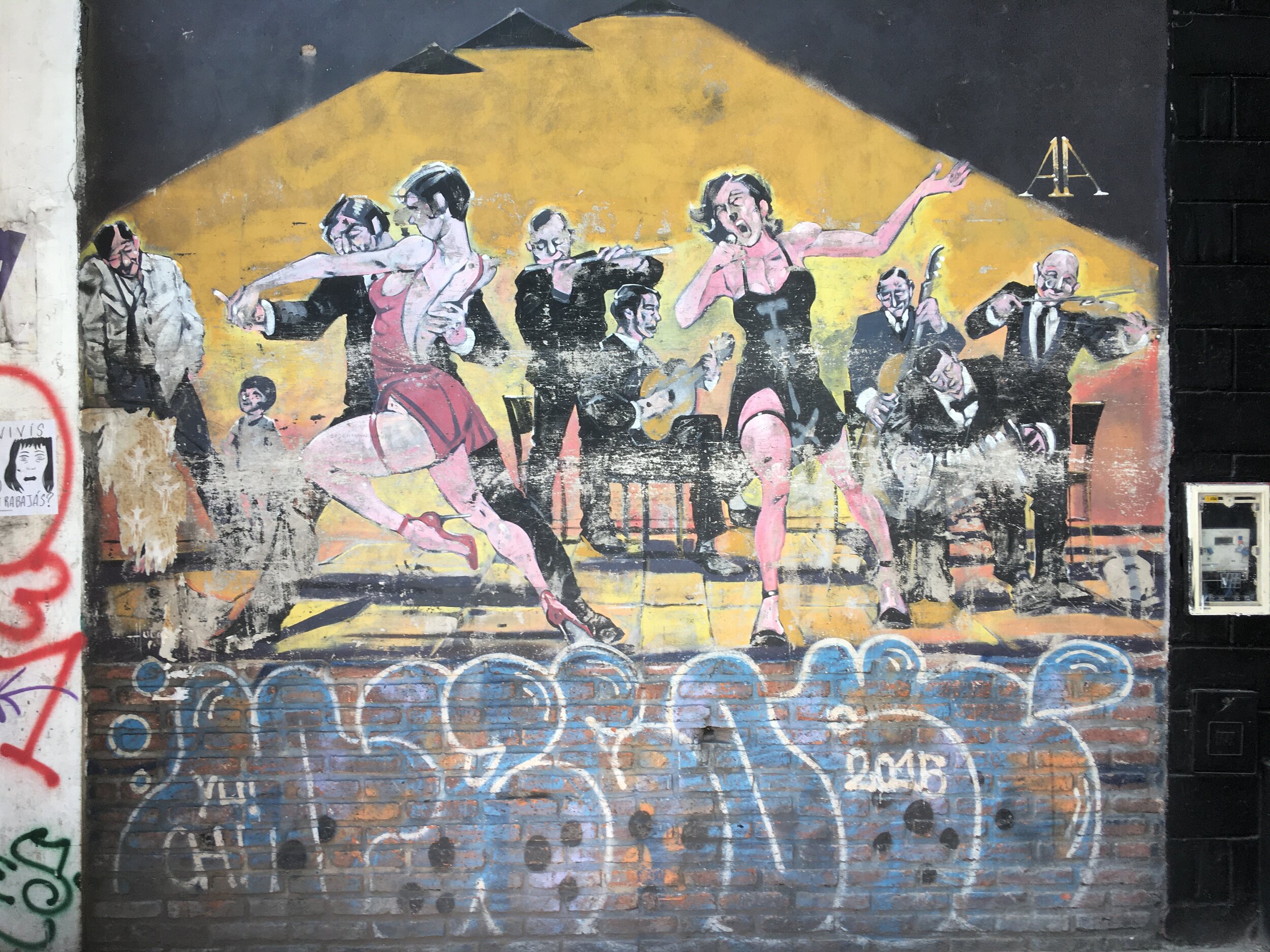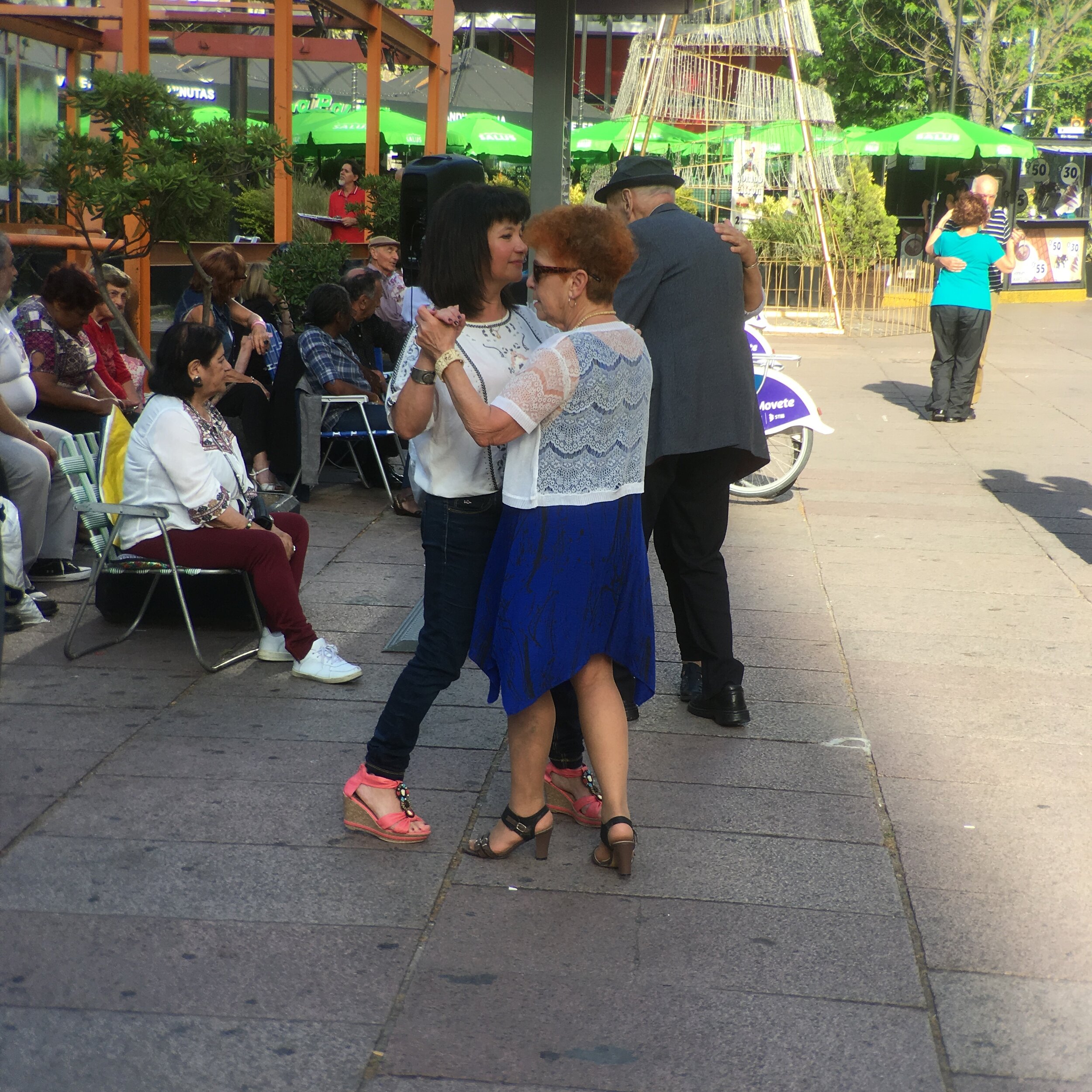The Birthplace Of Tango
BUENOS AIRES
29 January 2020
I took a fork in the road in the fall of 1971. It was a toss up between returning to Northwestern University to continue formal studies in communication or remain in Highlands, North Carolina, and pursue a project to open a restaurant. Up to this time, one of my theme songs was “Cast Your Fate to the Wind” by the Sounds Orchestral, virtually running in a continuous loop in my head since its release in 1962. I was open to possibilities.
The deciding factor ended up having nothing to do with my theme song, future wife, mother-in-law-to-be or some compelling desire to own a restaurant, or even to cook. It was not a toss of the coin; it was the toss of a frisbee. A day before my return to Evanston, I was tossing a frisbee with Rusty, my brother-in-law-to-be. An errant toss landed the disc in an oak tree, high enough that it would require a climb up the trunk. Dressed for late summer, I had on denim shorts and sandals. Up I went, and down I came with frisbee in hand.
The next day I was driving my 1964 Valiant station wagon, which I named “Trout Fishing in America” after Richard Brautigan’s book, back to school to register. Passing through the Great Smoky Mountains, I couldn’t ignore the intense itching sensation that seemed to reach from head to toe. . My eyes swelled until they were almost shut, my feet ballooned in my shoes, and my skin exploded in a bubbling rash of revolt across my body. In the throes of near-death decision-making, I faced fourteen hours ahead to Evanston or 90 minutes back to Highlands. Decision made.
The physician at the Highlands Hospital was an old Army doctor. His treatment for my severe poison ivy was unsympathetic: “Tough it out, son.”. Evidently, the trunk that I climbed supported thick poison ivy vines, which reached into the upper branches like cables around a drum. Unfortunately, my class schedule at Northwestern did not include mountain plant identification .
The same wind that blew my wayward frisbee also swept up my fate—a lifetime of food—cast in that very same current, and with that, my journey began at 18.
Prior to the kitchen and the decision not to return to NW, I considered dance as an option. This path closed itself while taking ballet in Franklin, a rural mountain town, not the mirror image of rich and exclusive Highlands – the summer home of the former Bobby Jones. He tuned his game on a course that became The Highlands Country Club. I was the only boy in a class of ten, a dripping wet one-hundred-twenty-five pound pretzel. The other students being farmers’ daughters and mountain gals weighing eleven stone if an ounce. Executing lifts, which every girl was eager to try, dissuaded me from continuing, but I have never given up my love of dance.
Being here in Buenos Aires, the epicenter of tango, is fate.
I do not intend to become the next tango impresario.
Tango is heat.
“Habanera,” “candombe,” “milonga” The progenitor of the cha-cha and the mambo. It has the binary 2/4 beat of an African rhythm. The accented upbeat in the middle of the bar lends power to the habanera rhythm—boom…ba-bop-bop. (THAT, baby, is the rhythm of a kitchen ON FIRE!)
It is more than rhythm. It is the way that rhythm translates into dance. If you were to watch the dancers in slow motion,you’d see the mating dance of black snakes:bodies intertwined, legs (like snake tongues) flicking and licking staccato- piercing-bolts into the air between each others legs, all while swirling and twirling around each other, leaning in, pushing back, syncopated tempo, exotic and erotic.
Watching tango is voyeuristic.
The music plays without drums, which, given the intensity of the rhythm, is peculiar, considering the rich African influences that abound.. Tango has roots in the contradanza of Spain, derived from English folk dance. It is music based on not often played instruments: the accordion and the bandoneon, as well as the familiar violin, guitar, and double bass. Music played in two equal, repeating sections of an original key and a dominant, or relative minor key, of the original.
It is a dance of passion. A dance of partnership. A dance of the kitchen.
I never made it to the dance stage; my stage was the kitchen, but I have never stopped dancing. And it is never too late to add one more step.
“To dance is to live, to live is to dance.”
(I no longer blister from poison ivy.)







